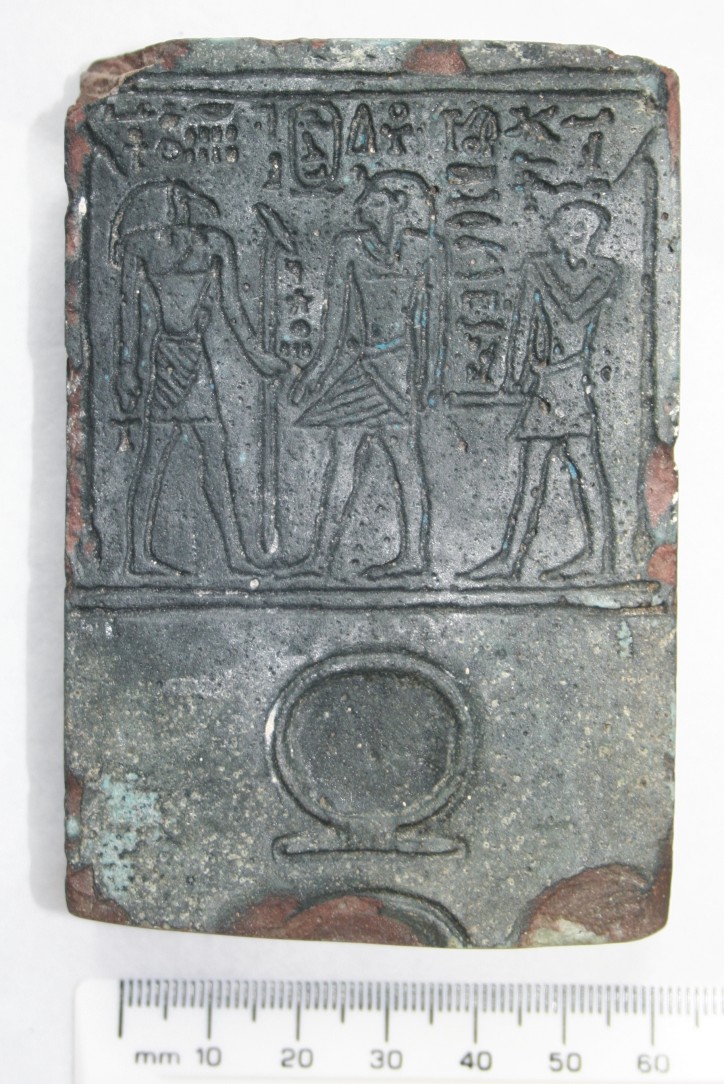EC2018
 EC2018
EC2018
The ancient Egyptian scribe used black and red ink which would have been placed in a pen holder. This is the top part of the pen holder. The circular depression is where one of the coloured inks would have gone. You can just see the remains of the second depression below. The depression (ink well) is in the shape of a shen sign (like Liverpool M13536 or Louvre 3023).
The shen ring, like the cartouche is a protective symbol and common to scribal palettes. If you look at EC74 you will see that it is in the shape of a cartouche. It is not known exactly why such symbols were put on palettes. One suggestion is that it shows that the scribe was under the protection of the king. Alternatively it may have been placed there to protect the work of the scribe, whose written words had magical efficacy.
Stone palettes tend to be ceremonial or votive while wooden ones were used in everyday life. Thus, this was probably a votive or ceremonial palette. This idea is reinforced by the fact that the wells are very shallow, suggesting a non-kinetically utilitarian function.
The scene shows from left to right, the god Thoth, the scribe of the gods. He often appears on palettes as a protector of scribes. He is here shown with an ibis head. The inscription states that he is lord of el-Ashmunein. Thoth is carrying a ws-sceptre, a symbol of power and two such sceptres flank this whole scene.
Thoth is facing a king. We know he is a king because he is wearing a uraeus and his name is written in a cartouche.
The owner of the palette stands behind Thoth.
The item measures 9.5×6.5cm
Other objects related to scribes